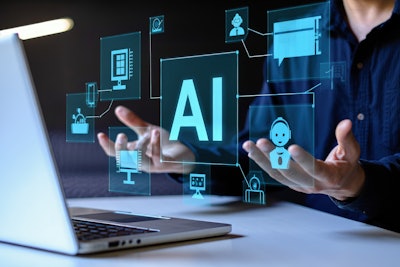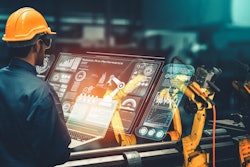
Manufacturing has reached an inflection point. For decades, it was a hardware-first industry: physical plants, manual labor, paper records and planning on spreadsheets. Today, AI is pushing it into a software-first era, where competitive advantage comes from how quickly you can process data, make decisions and adapt the supply chain in real time. This shift isn’t for the faint of heart: modernizing manufacturing at this scale takes grit and an appetite to solve problems many people would walk away from. But the payoff is clear: sharper competitiveness, greater resiliency, and an entirely new way to design, source and deliver.
By embedding real-time pricing, sourcing, and quality control into the design process, AI is enabling faster reshoring, lower costs, and driving a new chapter of agile, digitally optimized production. In manufacturing today, AI is being used for several things including cost, source, price and design. These levers touch every stage of the supply chain. And they’re where the real transformation is already happening.
This shift is well underway. In a recent survey, it was noted that 70% of manufacturing CEOs reported embracing AI to improve planning and operational efficiency, with automation close behind. Of those companies that are investing in AI, most report they have seen a significant ROI, and nearly two-thirds (63%) believe AI and other technologies will be transformational for their operations.
Tariffs and geopolitical tensions are shaking the foundations of the global economy, from factory floors to the farthest reaches of supply chains. For manufacturers, it’s a decisive moment to modernize operations, digitize the supply chain and harness technologies like AI to adapt in real time to a volatile market.
AI and pricing
When manufacturers need to determine the cost of a part, developments in AI have now made it possible to simply upload a CAD file to a secure portal and instantly receive an itemized list of parts, prices and lead times.
Today, when a manufacturer uploads a CAD file, the AI doesn’t just “look” at it. It has the ability to conduct a detailed geometric analysis, breaking the design into millions of uniquely defined pixels to determine manufacturability, viable materials, tolerances, and compatible processes. Pattern-matching against millions of past builds, the AI can return an accurate price and lead time in seconds – no guesswork, no manual review.
According to Capital Pricing Consultants, using AI for quoting enables significant reductions in quoting time by up to 70%.
AI is already revolutionizing productivity for quote times, pulling from millions of data points. It analyzes complex parts in real-time to deliver the most accurate price and lead times within seconds of an upload, 24/7. Leveraging AI-powered tools to extract real-time insights not only accelerates the quoting process, but frees up time for teams to focus on higher-value work.
AI and sourcing
On the sourcing side, AI can be applied to remove friction between buyers and suppliers. For example, instead of manually canvassing their networks, procurement teams can now use an AI-powered platform to instantly match the job to the best-fit supplier, whether that's a large firm or a small shop taking its “batting practice” with low-risk jobs. Over time, suppliers are awarded more work by consistently delivering on speed, quality and service. It’s a meritocratic system that strengthens the entire supply base.
Using the same geometric analysis described above, AI rules out suppliers lacking the required equipment and pinpoints those with proven capabilities, such as handling specific materials, grades, or tight tolerances. It then pattern-matches the design against millions of past builds to find suppliers that have successfully produced similar parts, continuously learning from outcomes to improve accuracy and adapt to changes in capacity, capabilities, and global supply dynamics.
This technology is available to everyone and is especially critical in today’s manufacturing landscape amid tariffs and geopolitical uncertainty.
Future outlook of AI
The next frontier is quality, especially in mission-critical sectors like aerospace and defense, where a fraction of a millimeter can be the difference between a successful launch and a costly failure. Today, many quality checks are still manual. AI can intervene before manufacturing even starts, flagging mismatches between drawings, CAD files, and material selections. It can embed inspection instructions directly into supplier workflows, increasing first-pass yield, reducing rework, and shrinking the environmental footprint from scrapped parts.
The impact of this will be substantial: reduced operational costs, less wasted production, and a smaller environmental footprint from fewer scrapped parts. By catching errors earlier and ensuring only fully compliant products are shipped, AI will not only drive efficiency but also strengthen trust with customers who require the highest degree of precision.
AI will also save valuable time for these industries by automating the verification of what’s quoted versus what’s in the design. This pre-manufacturing intervention ensures that any mismatches are resolved before product starts, a process that currently relies heavily on human diligence. While teams do an excellent job, the sheer volume makes it challenging to review every detail.
With AI analyzing every metric upfront, manufacturers can reduce waste, improve turnaround times, and achieve greater post-production accuracy. The rise of systematic and virtual quality control will elevate quality standards across the board.
Digital-first manufacturing
As the manufacturing landscape evolves, those who embrace innovation and a digital-first mindset will be best equipped to navigate tariffs, geopolitical uncertainty, and rapid market shifts-building supply chains that can withstand disruption.
This is what “hardware to software” really means in manufacturing: shifting the hardest problems (pricing, sourcing and quality) into the software layer so they can be solved instantly, repeatedly, and at scale. Those who embrace this mindset will build supply chains that are efficient and adaptive: able to navigate tariffs, geopolitical shifts and market swings without losing momentum.



















